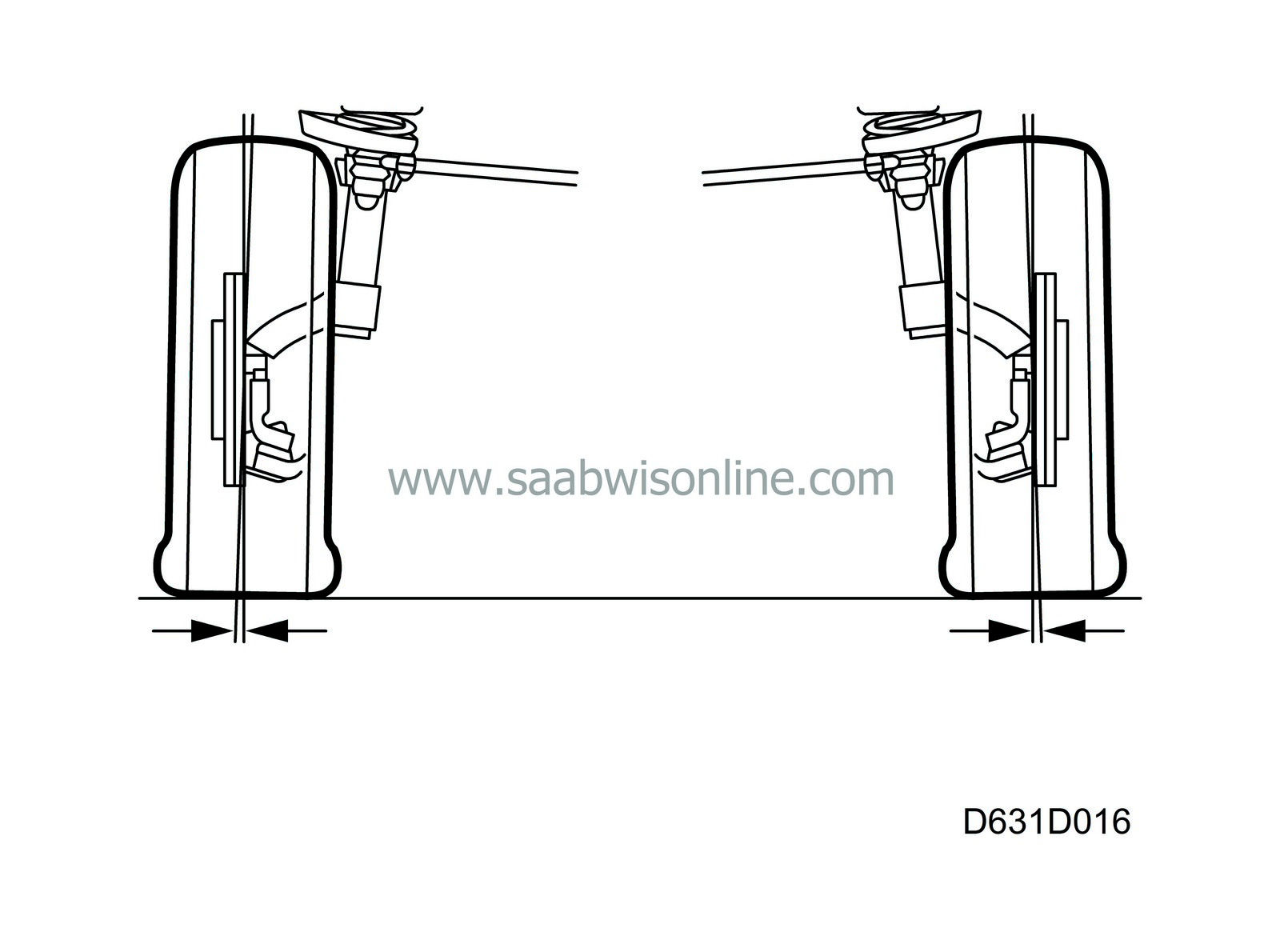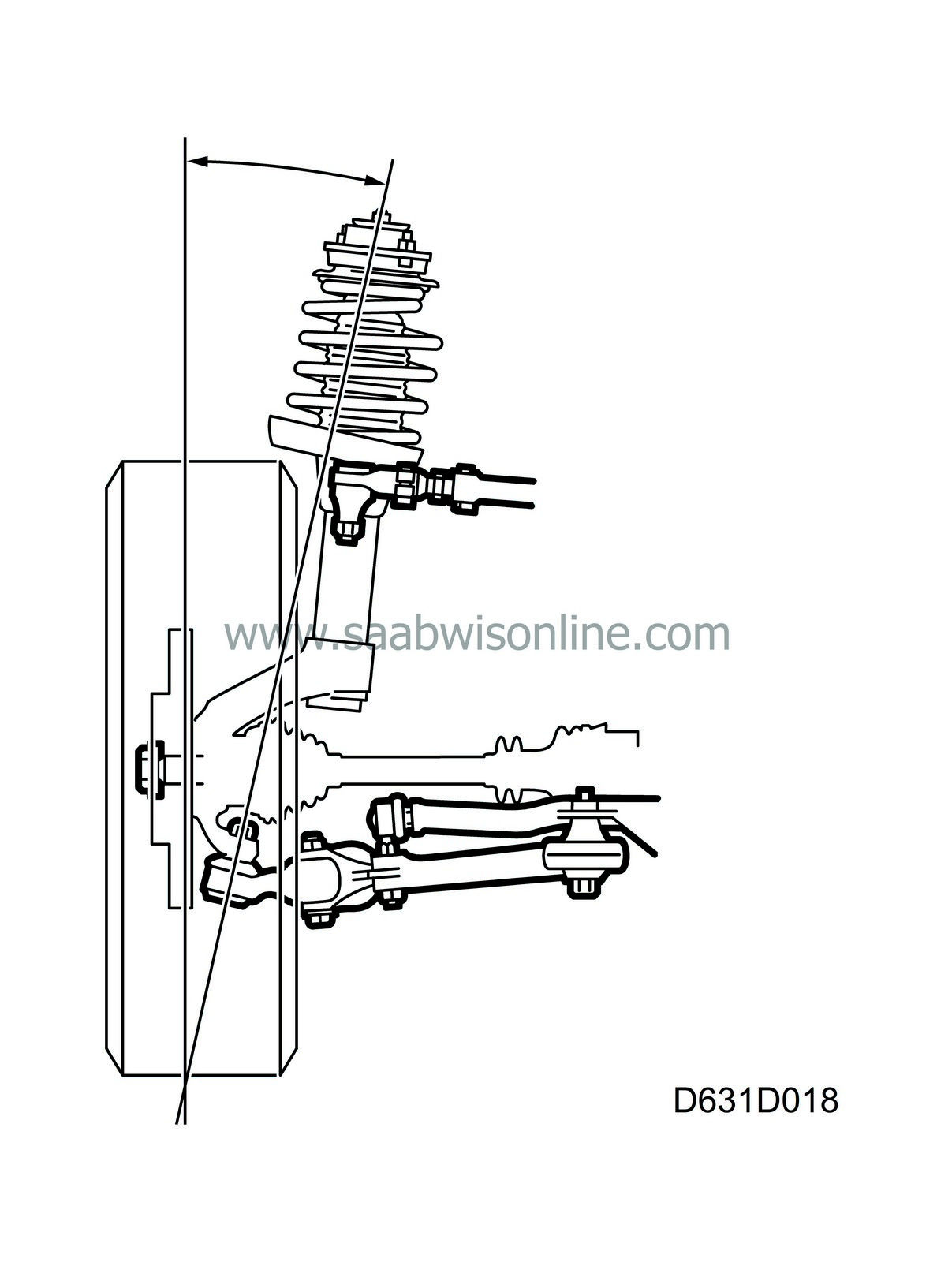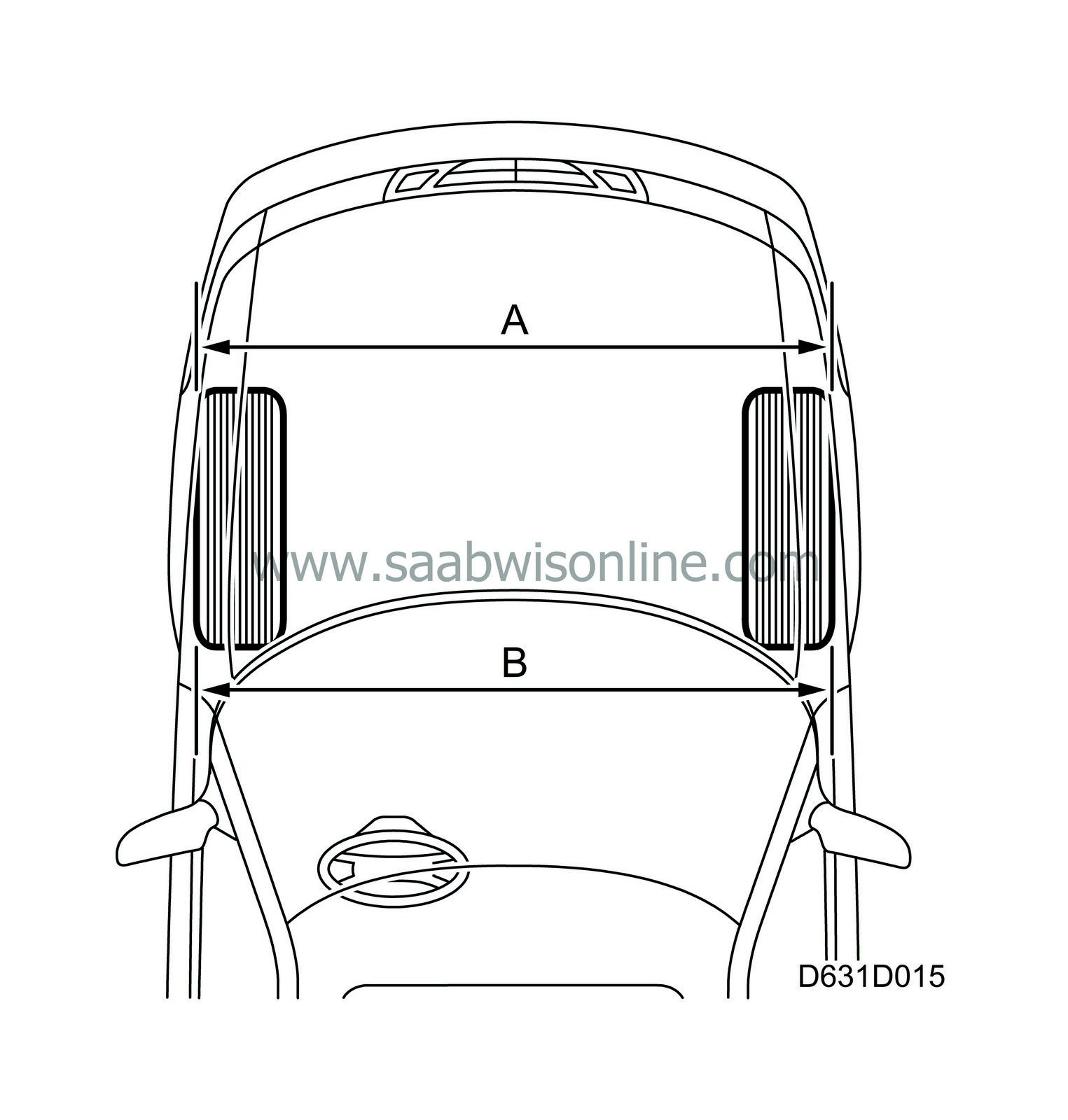Wheel geometry
| Wheel geometry |
| Toe-in |
Toe-in constitutes the difference between A and B. Toe-in is 0 if the wheels are parallel and both measurements are equal.
Toe-in must always be positive, i.e. B must be greater than A.
Adjust toe-in equally on the left and right-hand track rods so that the steering wheel spokes will be symmetrical.
| Camber |

Camber is the angle with which the wheel deviates from the perpendicular, see illustration.
If the wheel leans outwards, the camber is said to be positive (+) and if it leans inwards the camber is said to be negative (-). Wheel camber on the Saab 9-3 is negative.
| Caster |

Caster is the angle with which the imaginary swivel-axis line deviates from the perpendicular, viewed from the side, and is specified in degrees.
When the imaginary swivel-axis line is inclined rearwards as illustrated, caster is said to be positive (+) and when inclined forwards it is said to be negative (-). The Saab 9-3 has positive caster.
Caster tends to keep the wheels pointing straight ahead and helps the driver to steer a straight path. In addition, more powerful steering wheel return action is obtained with a greater caster angle.
Caster is not adjustable.
| Inclination of imaginary swivel-axis line |

The imaginary swivel-axis line is the imaginary line through the bearing in the upper spring seat and the ball joint. Inclination is measured to the perpendicular and specified in degrees.
Inward inclination is positive and outward negative. Correct inclination gives lighter steering and makes the wheels strive to go straight ahead.
Saab 9-3 has positive inclination.
Inclination cannot be adjusted.
| Steering angle |

The ideal steering angle for a perfect line on all wheels when cornering varies with the speed of the car and the turning radius, owing to suspension movement and tyre deformation.
Since the steering arms point slightly inwards in relation to the direction of the car, the angle of the inside wheel when cornering will be slightly greater than that of the outside wheel.



